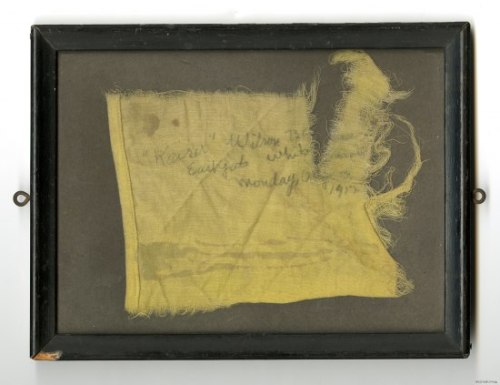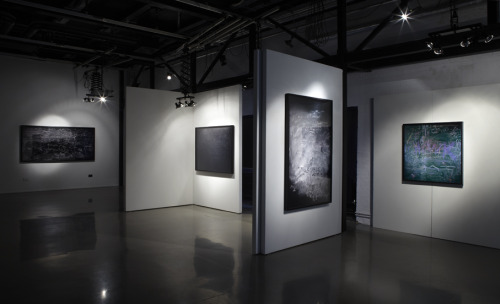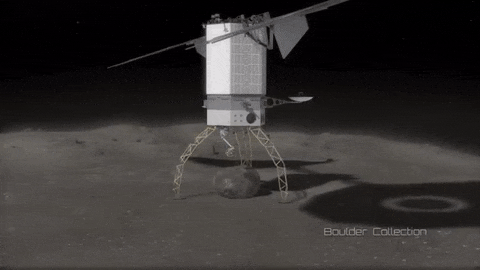Sorry, Little Guy
Sorry, little guy




Schiaparelli is scheduled to land on Mars tomorrow! Good luck, little guy.
More Posts from Stubborn-turtle-blog and Others

This small scrap of cloth tells a much larger story of suffrage history.
This week in 1917, the National Women’s Party started picketing outside the White House for the right to vote. For months they protested silently, until a crowd began taunting them, throwing eggs and tomatoes at them, and tearing up their banners.
So the women made more banners.
A scrap from one was seized by police but eventually made its way to Alice Paul, the founder of the NWP and leader of the pickets, and then into our National Museum of American History.
Does anyone else just examine the marvel that is the human body (not in a sexual way). Like, I’m sitting here right now moving my fingers and watching my ligaments tense and loosen as they pull on the bones that compose the phalanges of my hand. Certain finger positions cause divots to form between the ligaments, while balling a fist causes them to be almost even with the flesh of my hand.
Sorry for the weird ramble. I just find how all the parts of the human body work and fit together to be absolutely fascinating.
The human body is an amazing machine.
Our Most “Liked” Instagram Posts of 2016
Our Instagram page has over 1,800 images and is lucky enough to be followed by more than 18 million fans.
What images and videos were your favorite from this past year? Great question, and one we asked ourselves too!
Here’s a look at our most liked Instagram posts* of 2016…Enjoy!
#10

Colorful “last hurrah’ of a star: The Hubble Space Telescope shows off the colorful “last hurrah” of a star like our sun. The star is ending its life by casting off its outer layers of gas, which formed a cocoon around the star’s remaining core. With 513,672 likes, this image is our 10th most liked of 2016.
#9

Vivid glowing auroras in Jupiter’s atmosphere! Astronomers are using the Hubble Space Telescope to study auroras – stunning light shows in a planet’s atmosphere – on the poles of the largest planet in the solar system. This image ranks #9 for 2016 with 515,339 likes.
#8

Astronomers found evidence for what is likely one of the most extreme pulsars, or rotating neutron stars, ever detected. The source exhibits properties of a highly magnetized neutron star, or magnetar, yet its deduced spin period is thousands of times longer than any pulsar ever observed. With 517,995 likes, this picture ranks #8 for 2016.
#7

Fiery South Atlantic Sunset! An astronaut aboard the International Space Station photographed a sunset that looks like a vast sheet of flame. With Earth’s surface already in darkness, the setting sun, the cloud masses, and the sideways viewing angle make a powerful image of the kind that astronauts use to commemorate their flights. This image ranks #7 for 2016 with 520,553 likes.
#6
Go floating! Join us for a fly-through of the International Space Station! This footage was shot using a fisheye lens for extreme focus and depth of field. This video ranks as our sixth most liked Instagram post of 2016 with 541,418 likes.
#5

This #BlackFriday post helped us celebrate our 4th annual #BlackHoleFriday! Each year we pose awesome content about black holes on the Black Friday shopping holiday. A black hole is a place in space where gravity pulls so much that even light cannot get out. With 549,910 likes, this image ranks #5 for 2016.
#4

A cluster of young stars – about one to two million years old – located about 20,000 light years from Earth. Data in visible light from the Hubble Space Telescope (green and blue) reveal thick clouds where the stars are forming. This image ranks #4 for 2016 with 573,002 likes.
#3

Supermoon is a spectacular sight! The Nov. 14 supermoon was especially “super” because it was the closest full moon to Earth since 1948. We won’t see another supermoon like this until 2034. Which might have something to do with this image ranking #3 for 2016 with 695,343 likes.
#2

Supermoon seen from space! Aboard the International Space Station, NASA astronaut Peggy Whitson posted this image on Dec. 14 captured by European Space Agency astronaut Thomas Pesquet. This stunning image ranks #2 for 2016 with 704,530 likes.
#1

It’s a bird, it’s a plane…no, it’s a #supermoon! The moon, or supermoon, is seen rising behind the Soyuz rocket at the Baikonur Cosmodrome launch pad in Kazakhstan ahead of the November crew launch to the International Space Station. This photo was our #1 image of 2016 with 746,981 likes.
Thanks for joining us as we traveled through the space events of 2016. We’re looking forward to all of the interstellar fun that 2017 will bring. Happy Holidays!
Do you want to get amazing images of Earth from space, see distant galaxies and more on Instagram? Of course you do! Follow us: https://www.instagram.com/nasa/
*Posts and rankings are were taken as of Dec. 21, 2016.
Make sure to follow us on Tumblr for your regular dose of space: http://nasa.tumblr.com
I second wanting prints of these









Alejandro Guijarro photographs the chalkboards of some of the brightest minds in quantum physics for his continuing series Momentum. He went to research facilities like CERN and many of the top universities in the world to find them.
![Yikes! [http://imgur.com/0mHJob3]](https://64.media.tumblr.com/64b1e17ce0a209744bc5d5590c95b597/tumblr_ohxss5q1c51s04h2ho1_500.jpg)
Yikes! [http://imgur.com/0mHJob3]

#Yes

Lovelace’s friend Charles Babbage designed a concept for a machine he called the “Analytical Engine” – essentially a mechanical computer that would have relied on punch cards to run programs. He recruited Lovelace to translate some notes from one of his lectures, but while Lovelace was translating she added to the notes herself.
The notes grew to three times their original length, as Lovelace described what many call the first computer program. Because of funding issues, the machine was not built during her and Babbage’s lifetimes.
But Lovelace’s published article on the Analytical Engine later became a source of inspiration for Alan Turing’s work to build the first modern computers in the 1940s.
Women are sometimes considered outsiders in the science and technology fields, but Lovelace and many of the female computer programmers who followed her are proof that this paucity is a function of society, not capability. We forget or never learn about the female “computers” who programmed early mechanical machines in World War II, or that the women’s magazine Cosmopolitan once ran articles suggesting that women were perfectly suited for programming.
If the lack of acknowledgement of women’s contributions to science, technology, engineering, and mathematics (STEM) fields grinds your gears, then Ada Lovelace should be one of the first names you go to right that wrong.
Further reading:
Wikipedia profile
10 Things You May Not Know About Ada Lovelace
What if there were more women in tech?
Why we ALL need to celebrate Ada Lovelace Day
How is the source for this returnofkings, a MRA site?
If men stopped working…the world would continue on.
If women stopped working, then things would get ugly.
Mission Possible: Redirecting an Asteroid
As part of our Asteroid Redirect Mission (ARM), we plan to send a robotic spacecraft to an asteroid tens of millions of miles away from Earth, capture a multi-ton boulder and bring it to an orbit near the moon for future crew exploration.

This mission to visit a large near-Earth asteroid is part of our plan to advance the new technologies and spaceflight experience needed for a human mission to the Martian system in the 2030s.
How exactly will it work?
The robotic spacecraft, powered by the most advanced solar electric propulsion system, will travel for about 18 months to the target asteroid.

After the spacecraft arrives and the multi-ton boulder is collected from the surface, the spacecraft will hover near the asteroid to create a gravitational attraction that will slightly change the asteroid’s trajectory.

After the enhanced gravity tractor demonstration is compete, the robotic vehicle will deliver the boulder into a stable orbit near the moon. During the transit, the boulder will be further imaged and studied by the spacecraft.

Astronauts aboard the Orion spacecraft will launch on the Space Launch System rocket to explore the returned boulder.

Orion will dock with the robotic vehicle that still has the boulder in its grasp.

While docked, two crew members on spacewalks will explore the boulder and collect samples to bring back to Earth for further study.

The astronauts and collected samples will return to Earth in the Orion spacecraft.
How will ARM help us send humans to Mars in the 2030s?

This mission will demonstrate future Mars-level exploration missions closer to home and will fly a mission with technologies and real life operational constraints that we’ll encounter on the way to the Red Planet. A few of the capabilities it will help us test include:
Solar Electric Propulsion – Using advanced Solar Electric Propulsion (SEP) technologies is an important part of future missions to send larger payloads into deep space and to the Mars system. Unlike chemical propulsion, which uses combustion and a nozzle to generate thrust, SEP uses electricity from solar arrays to create electromagnetic fields to accelerate and expel charged atoms (ions) to create a very low thrust with a very efficient use of propellant.
Trajectory and Navigation – When we move the massive asteroid boulder using low-thrust propulsion and leveraging the gravity fields of Earth and the moon, we’ll validate critical technologies for the future Mars missions.
Advances in Spacesuits – Spacesuits designed to operate in deep space and for the Mars surface will require upgrades to the portable life support system (PLSS). We are working on advanced PLSS that will protect astronauts on Mars or in deep space by improving carbon dioxide removal, humidity control and oxygen regulation. We are also improving mobility by evaluating advances in gloves to improve thermal capacity and dexterity.
Sample Collection and Containment Techniques – This experience will help us prepare to return samples from Mars through the development of new techniques for safe sample collection and containment. These techniques will ensure that humans do not contaminate the samples with microbes from Earth, while protecting our planet from any potential hazards in the samples that are returned.
Rendezvous and Docking Capabilities – Future human missions to Mars will require new capabilities to rendezvous and dock spacecraft in deep space. We will advance the current system we’ve developed with the international partners aboard the International Space Station.
Moving from spaceflight a couple hundred miles off Earth to the proving ground environment (40,000 miles beyond the moon) will allow us to start accumulating experience farther than humans have ever traveled in space.
Make sure to follow us on Tumblr for your regular dose of space: http://nasa.tumblr.com
-
 andromeda3125alpheratz liked this · 4 years ago
andromeda3125alpheratz liked this · 4 years ago -
 cerezzzita liked this · 5 years ago
cerezzzita liked this · 5 years ago -
 class42warship liked this · 5 years ago
class42warship liked this · 5 years ago -
 evilazfuck-blog liked this · 5 years ago
evilazfuck-blog liked this · 5 years ago -
 maximumhumancolormaker liked this · 6 years ago
maximumhumancolormaker liked this · 6 years ago -
 sleepingdeath-main liked this · 6 years ago
sleepingdeath-main liked this · 6 years ago -
 just99-me06-perhaps reblogged this · 6 years ago
just99-me06-perhaps reblogged this · 6 years ago -
 sakulboi liked this · 6 years ago
sakulboi liked this · 6 years ago -
 fangirl-in-the-hoodie-blog liked this · 6 years ago
fangirl-in-the-hoodie-blog liked this · 6 years ago -
 gay-little-treat-wizard liked this · 6 years ago
gay-little-treat-wizard liked this · 6 years ago -
 likeapaperplane liked this · 6 years ago
likeapaperplane liked this · 6 years ago -
 cursedjellyfish liked this · 6 years ago
cursedjellyfish liked this · 6 years ago -
 booksmusicalsbandsohmy liked this · 6 years ago
booksmusicalsbandsohmy liked this · 6 years ago -
 bophiemarie-blog liked this · 6 years ago
bophiemarie-blog liked this · 6 years ago -
 stolentrafficcone-blog1 liked this · 7 years ago
stolentrafficcone-blog1 liked this · 7 years ago -
 dragonsorcery liked this · 7 years ago
dragonsorcery liked this · 7 years ago -
 greetings-from-the-suffer-puppet liked this · 7 years ago
greetings-from-the-suffer-puppet liked this · 7 years ago -
 frankzappasdaughter liked this · 7 years ago
frankzappasdaughter liked this · 7 years ago -
 followerofmercy liked this · 7 years ago
followerofmercy liked this · 7 years ago -
 professionally-homo liked this · 7 years ago
professionally-homo liked this · 7 years ago -
 freya-1000 liked this · 7 years ago
freya-1000 liked this · 7 years ago -
 total-confusion liked this · 7 years ago
total-confusion liked this · 7 years ago -
 seriously-no-good-names-left liked this · 7 years ago
seriously-no-good-names-left liked this · 7 years ago -
 smiling-all-my-life liked this · 7 years ago
smiling-all-my-life liked this · 7 years ago -
 power-in-plain-sight liked this · 7 years ago
power-in-plain-sight liked this · 7 years ago -
 originalobjecttheorist liked this · 7 years ago
originalobjecttheorist liked this · 7 years ago -
 chickenlegsandtheilluminati liked this · 7 years ago
chickenlegsandtheilluminati liked this · 7 years ago -
 yoihino liked this · 7 years ago
yoihino liked this · 7 years ago -
 brocki81 liked this · 7 years ago
brocki81 liked this · 7 years ago -
 wearingthemglasses liked this · 7 years ago
wearingthemglasses liked this · 7 years ago -
 queen--sherlock liked this · 7 years ago
queen--sherlock liked this · 7 years ago -
 plebeianmaster liked this · 7 years ago
plebeianmaster liked this · 7 years ago -
 enderlord1st-blog liked this · 7 years ago
enderlord1st-blog liked this · 7 years ago -
 pyte66 liked this · 7 years ago
pyte66 liked this · 7 years ago -
 positivityparkour liked this · 7 years ago
positivityparkour liked this · 7 years ago -
 shoplifting liked this · 7 years ago
shoplifting liked this · 7 years ago -
 mediocritymachine liked this · 7 years ago
mediocritymachine liked this · 7 years ago -
 pixelsbecool liked this · 7 years ago
pixelsbecool liked this · 7 years ago -
 harpoonedprince liked this · 7 years ago
harpoonedprince liked this · 7 years ago -
 brit-o-raptor liked this · 7 years ago
brit-o-raptor liked this · 7 years ago
Gaming, Science, History, Feminism, and all other manners of geekery. Also a lot of dance
243 posts
